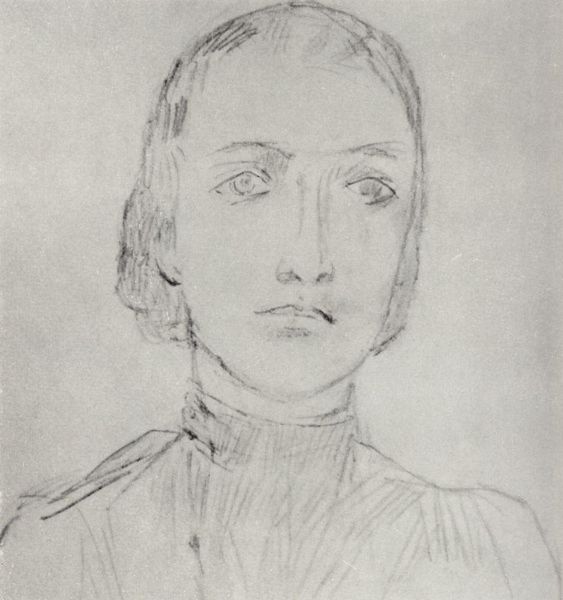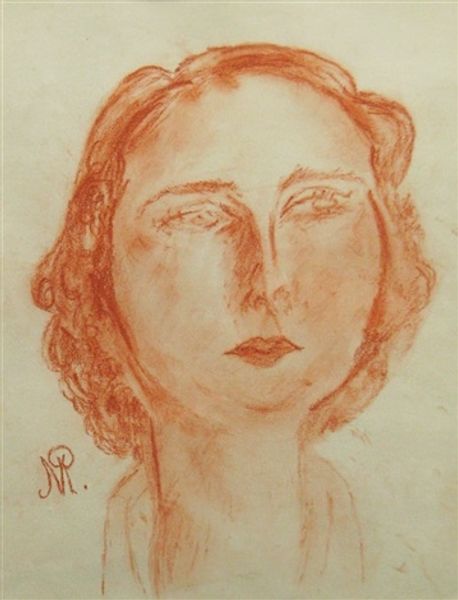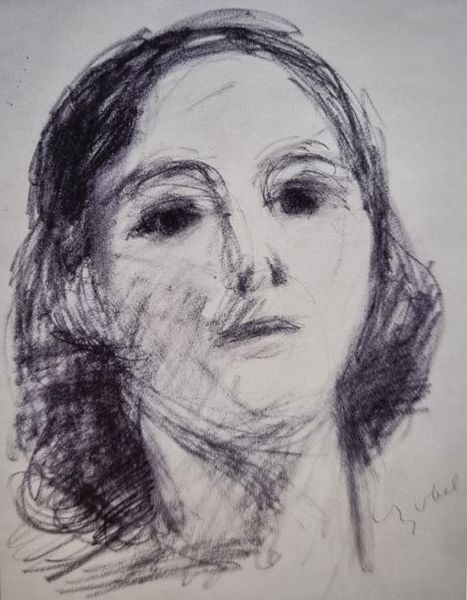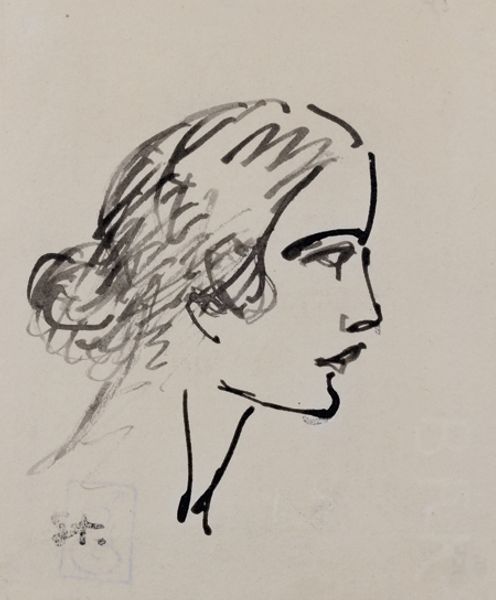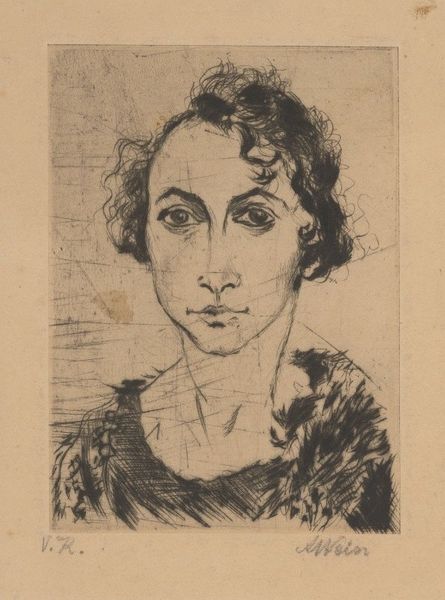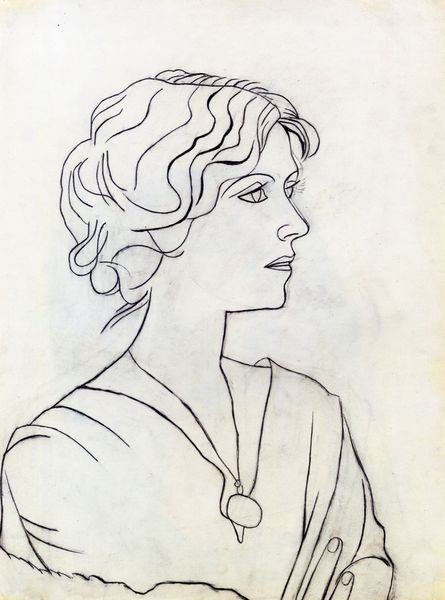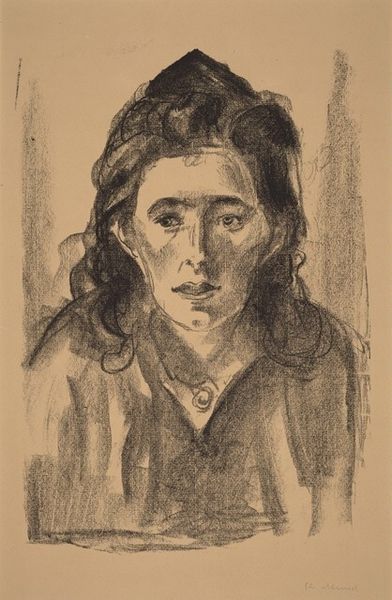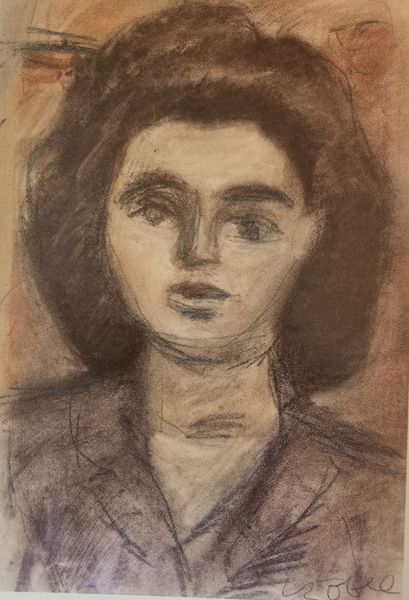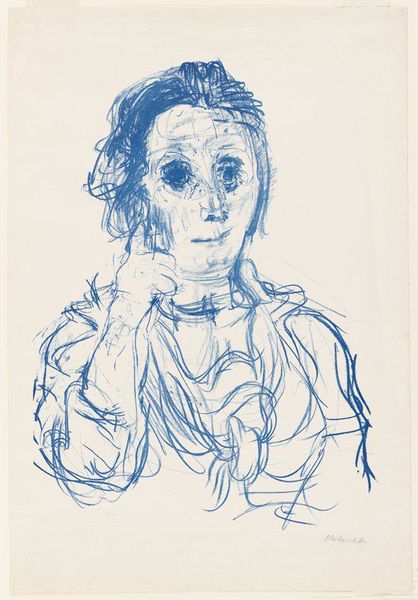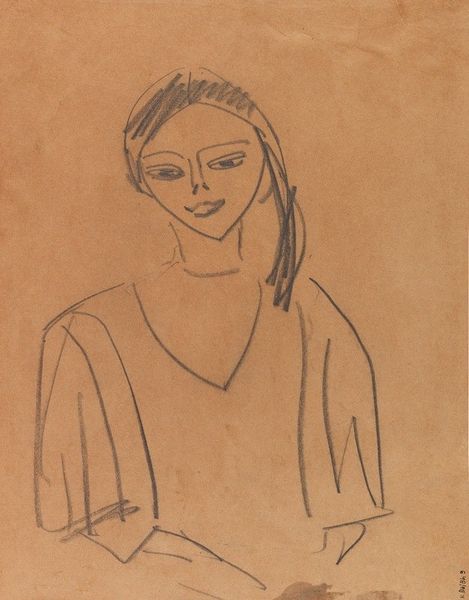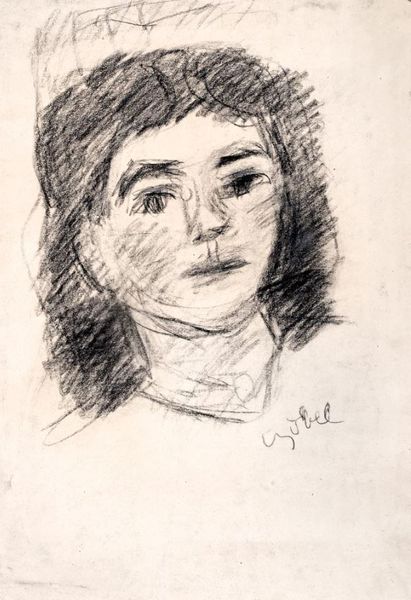
drawing, pencil
#
portrait
#
drawing
#
figuration
#
pencil
#
realism
Copyright: Public Domain: Artvee
Curator: This pencil drawing is by Nils Dardel. It's titled "Mona Mårtensson." Editor: It’s immediately striking—the gaze that’s cast slightly to the side, the almost hesitant lines of the mouth. There's an underlying melancholy, perhaps? It's captivating how much emotion Dardel conveys with just pencil strokes. Curator: Dardel was indeed masterful in capturing emotion, often reflecting his own personal turmoil. Though untitled and undated, its stylistic elements firmly place it within his oeuvre of portraiture. Dardel’s own relationships were complicated. How might you see those dynamics reflected here, in this work? Editor: I see a woman caught between presentation and truth. It's hard not to consider gendered expectations—how women have historically been portrayed and the inherent power dynamics at play between the artist and the model. Curator: Portraits have long been intertwined with power, status, and identity. Commissioned portraits often reinforced the social standing of the sitter, perpetuating societal norms. Do you think this is an idealized rendering of Mona Mårtensson or more in line with other portraits produced at that time? Editor: There’s an intimacy that seems to resist the kind of idealized portrayal one might find in a commissioned piece. It feels personal, like a moment captured, with maybe more intention towards something less commercial. The unfinished nature enhances the feeling, allowing a space for contemplation that feels accessible and raw. Curator: It certainly diverges from strictly commissioned work, in which elements of identity were controlled to fit within socio-economic norms. The quick nature of the drawing may suggest a closeness or maybe that the artist was merely seeking to record their perception. Editor: Exactly, so in my mind this challenges viewers to really consider this woman beyond a flat two-dimensional space or as just another pretty portrait. By viewing art like this, in its cultural and gendered settings, you see beyond it and are called to action, in the present! Curator: That’s such a needed interpretation to truly understanding the power of a pencil sketch. It prompts the consideration of the artwork's intersectional complexities as viewers confront gender, presentation, truth and power in portraiture and how such perceptions persist today. Editor: Agreed! Thank you, curator. Curator: Thank you.
Comments
No comments
Be the first to comment and join the conversation on the ultimate creative platform.
